Introduction and Package
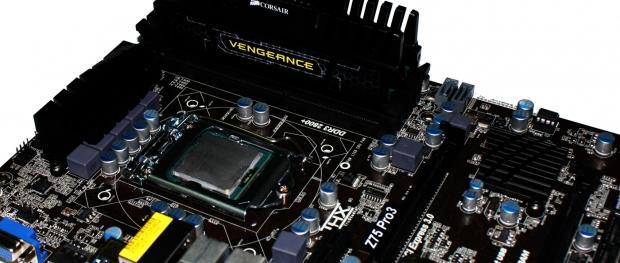
Intel's Z75 chipset isn't one we've heard about a lot and if you head over to Newegg and do a quick search for Z75 you'll discover just two motherboards that carry the chipset compared to the 65 items that are shown when you search for Z77.
If we head on over to the ASRock website and look at the motherboard section you'll see that while they offer a total of 12 Z77 based motherboards, they manufacture only one Z75 based motherboard and that is the ASRock Z75 Pro3. So why don't we see or hear much about this chipset? And what is the main difference between it and the higher end Z77?
Actually very little! On the PCI Express side the Z77 can have three PCIe x16 slots in an x8 / x4 / x4 configuration. The Z75 can only have up to two in an x8 / x8 configuration. The other main difference is that Intel SRT or Smart Response Technology isn't supported. What else differs, you ask? Nothing really - we've got the same CPU support, overclocking support, graphics support, RAID support, USB 2.0 and USB 3.0 ports and the same setup when it comes to SATA ports.
So why doesn't the Z75 platform not get the same attention as the higher end Z77 one? Maybe it's slower overall or could overclocking be affected? We're not too sure, but this is what we intend to find out with the ASRock Z75 Pro3 today and the first thing we're going to do is start by looking at what's going on with the package.
Next we'll take a closer look at the board itself before we head into the BIOS, cover our testbed and look at the overclocking side of things before we finally get into the performance of the board to see just how it differs to the ASRock Z77 Pro3 we looked at recently along with a couple of other boards.
Package

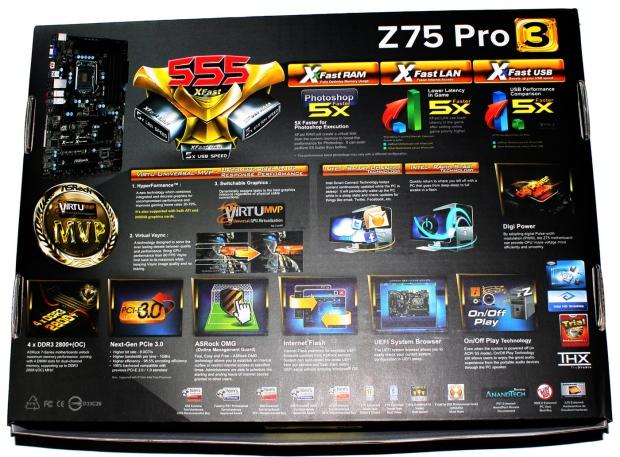
Even though not part of the Z77 chipset, we can see from the front of the box that the same 555 XFast technology is supported on the Z75 Pro3.Turning over you can see that we get a bit more detail on the XFast 555 technology while also seeing that a lot of the features that we saw on the Z77 Pro3 are present including Lucid Virtu MVP, ASRock OMG, Internet Flash, UEFI System Browser and On/Off Play Technology to name a few.
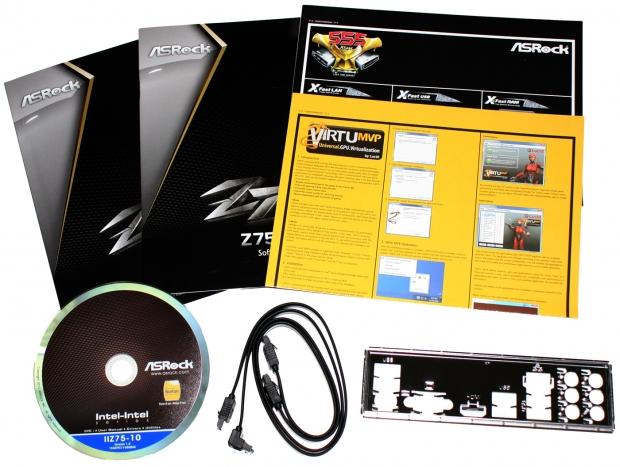
As for the bundle side of things we can see it's fairly light with the typical manual line up and some paperwork explaining both XFast technology and Lucid Virtu MVP. We've also got a rear I/O panel, two SATA II cables and a driver CD to round off the bundle.
ASRock Z77 Pro3 Motherboard

Having a look at the board you can see it's pretty much identical to the Z77 Pro3 we looked at the other day. We've got that pretty bland color scheme going on and you can see it's not a huge board. Let's move in a bit closer, though, to see what exactly we're dealing with here today.
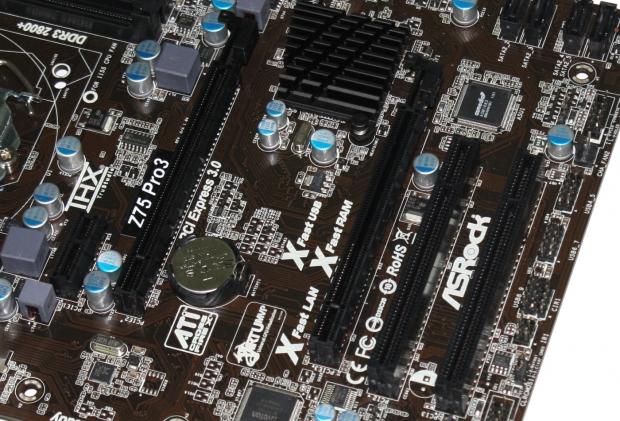
Moving in closer you can see on the right we've got two older legacy PCI slots while on the left hand side we've got a single PCIe x1 slot. Between these we've got two PCIe x16 slots with the top slot wired at x16 and the other being wired at only x4.

Moving across the bottom you can see the header line up starting with HD Audio, next to that we've got COM1, IR1, two USB 2.0, fan, main front panel and a speaker header sitting on the far right hand side.

Just like the Z77 Pro3, the SATA ports are split up with four SATA II ports at the bottom running off the Intel Z77 chipset.
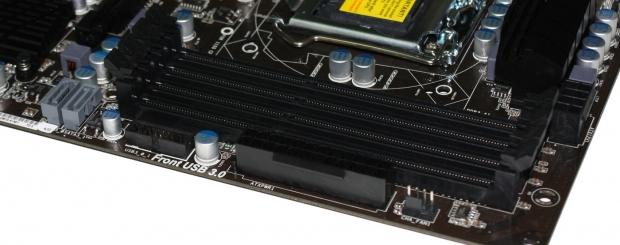
As we head to the north end of the board on the far left you can see we've got two more SATA ports present. These two are grey and are both SATA III compared to the SATA II black ones present towards the bottom of the board. We've also got a front USB 3.0 header, main 24-pin ATX power connector and fan header while above all this we've got four DIMM slots supporting up to 32GB of DDR3 ranging from 1066MHz DDR to 2800MHz DDR via overclocking.

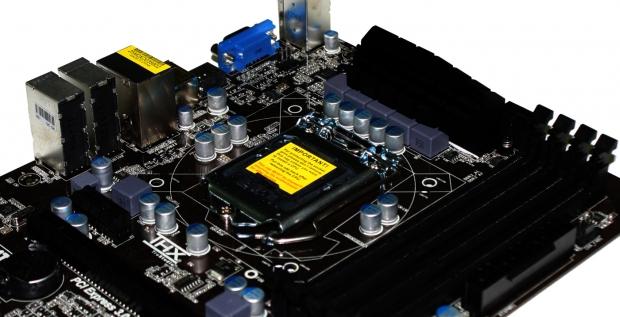
Across the top of the board you can see the main 8-pin CPU power connector, two more fan headers and moving back a little we get a better idea of what's going on with the CPU area which as you can see looks pretty clean.

Finally finishing off with the I/O department we can see we start with two USB connectors along with a PS2 connector. Moving across we've got a VGA and HDMI port followed up with two USB 3.0 connectors, two more USB 2.0 connectors, gigabit networking via the Realtek RTL8111E controller and six auxiliary ports that run off the Realtek ALC892 codec.
BIOS
Going over the BIOS you can see that the Z75 Pro3 is not only nearly identical to the Z77 Pro3, but follows the same overall layout and options that are seen on other Z77 offerings from ASRock including the OC Tweaker section, which we'll be making use of in just a moment.
As for the rest of the BIOS you can really see above it's all fairly self-explanatory via the pictures with all the usual options being present.
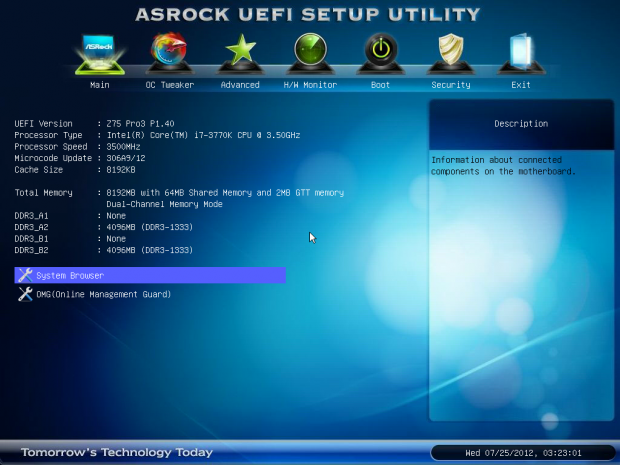




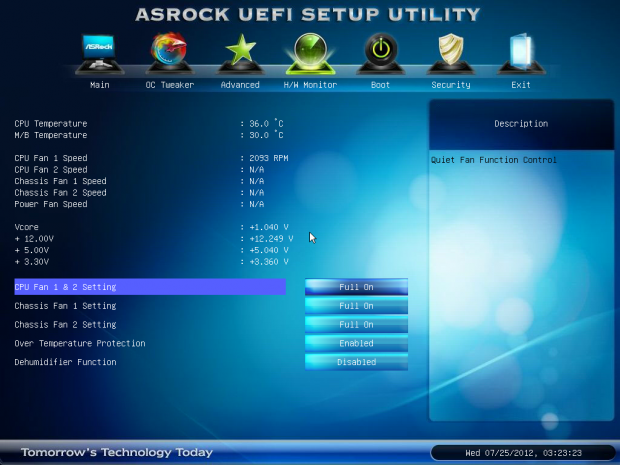
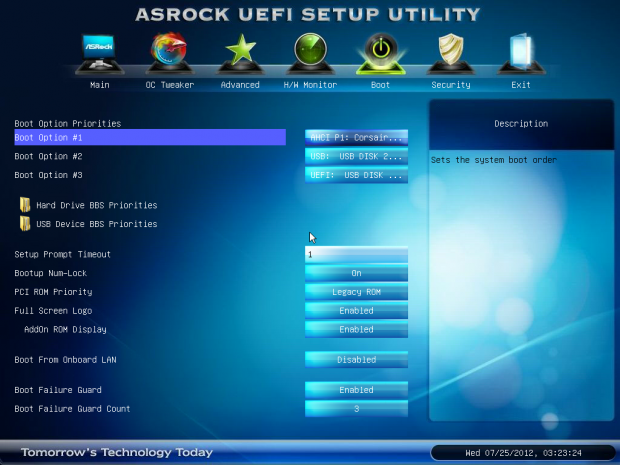
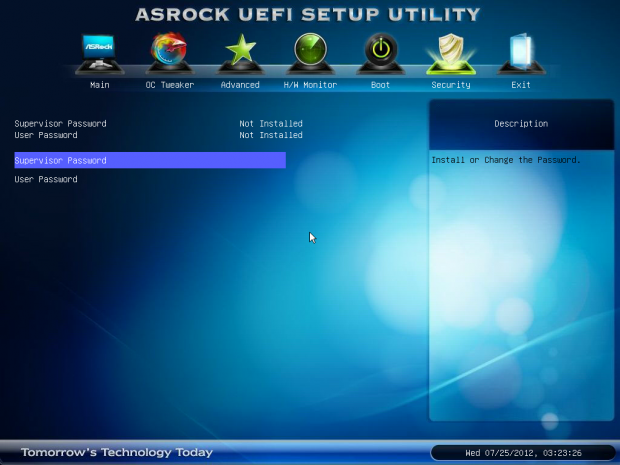
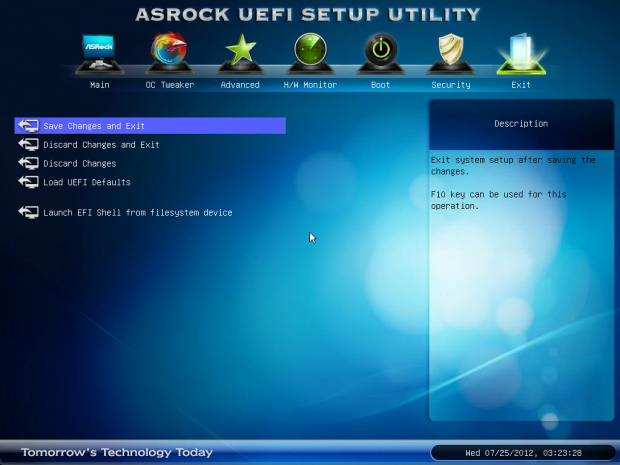
Benchmarks - Test System Setup and Overclocking

We would like to thank the following companies for supplying and supporting us with our test system hardware and equipment: Intel, ASUS, MSI, Western Digital, MemoRight and Corsair.
Looking above you can see a run down on our testbed so we won't go into any more detail on that. Instead we'll quickly cover the boards that we'll be using in our graphs today before moving onto the overclocking side of things which is then of course followed up with the performance tests.
The main board we want to compare against the ASRock Z75 Pro3 is its big brother the ASRock Z77 Pro3 based on the higher end Z77 chipset. Going over the Z75 Pro3 today, though, we can see there's nothing too major going on when it comes to looking at the two boards so it will be interesting to see what goes on with performance.
Along with those two boards, though, we've also got the ASRock X79 Extreme4, ASUS Maximus IV Extreme-Z and ASUS Maximus V GENE to round out the collection. As always, though, before we get into the testing side of things we want to quickly take a look at what's going on with the overclocking side of things which could possibly be an area which isn't as strong as the Z77 Pro3.
On the Z77 Pro3 we found ourselves getting a solid 4.6GHz clock our of our i7 3770k CPU which is by no means the highest we've achieved with some other Z77 boards offering us closer to 4.8GHz. With that as our starting point today, though, we headed into the BIOS, adjusted our voltages and set the CPU multiplier to 46x.

As we'd hope we didn't run into any problems at 4.6GHz so we moved up to the 47x multiplier which got into Windows with no issues, but it did BSOD quite quickly after we started our MediaEspresso encode. So we headed back into the BIOS, moved to 46x multiplier and bumped the BCLK up ever so slightly to 100.5 which resulted in our CPU running at 4.62GHz.
Let's get started!
CPU Benchmarks
HyperPi 0.99
Version and / or Patch Used: 0.99
Developer Homepage: www.virgilioborges.com.br
Product Homepage: www.virgilioborges.com.br
HyperPi is a front end for SuperPi that allows for multiple concurrent instances of SuperPi to be run on each core recognized by the system. It is very dependent on CPU to memory to HDD speed. The faster these components, the faster it is able to figure out the number Pi to the selected length.
For our testing we use the 32M run. This means that each of the four physical and four logical cores for the i7 and the four physical cores of the i5 is trying to calculate the number Pi out to 32 million decimal places. Each "run" is a comparative to ensure accuracy and any stability or performance issues in the loop mentioned above will cause errors in calculation.

AIDA64
Version and / or Patch Used: 1.00.1035BETA
Developer Homepage: http://www.aida64.com
Product Homepage: http://www.AIDA64.com
Replacing Everest in our labs is AIDA64. This new testing suite is from the core development team from Lavalys and continues that tradition. The guys have thrown in better support for multithreaded CPUs as well as full 64 bit support. We use this to test memory and HDDs for now, but may find ourselves opening this up to other areas of the motherboard.

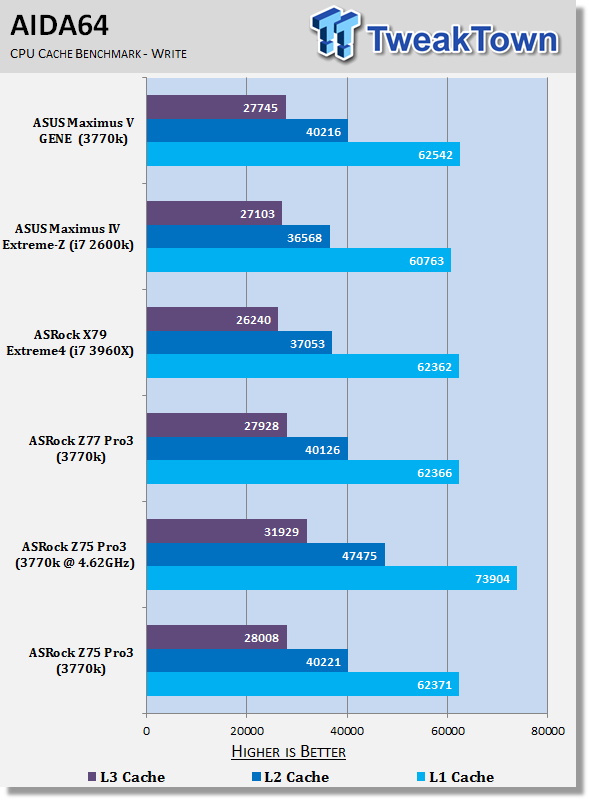
At stock we can see that both Pro3 motherboards perform almost identical to each other even, though, they're using slightly different chipsets. As always overclocking brings with it a nice boost in performance and we can see an overall strong boost when it comes to the synthetic performance of our 3770k CPU.
System Benchmarks
PCMark 7
Version and / or Patch Used: 1.04
Developer Homepage: http://www.pcmark.com
Product Homepage: http://www.pcmark.com
PCMark 7 includes a range of tests that give different views of your system's performance. In the Advanced Edition you can choose which tests to run. The common use and hardware component tests are unavailable in the Basic Edition.
Overall system performance is measured by the PCMark test. This is the only test that returns an official PCMark score. The Lightweight test measures the system capabilities of entry-level systems and mobility platforms unable to run the PCMark test, but it does not generate a PCMark score. Common use performance is measured by the scenario tests - Entertainment, Creativity and Production - each of which results in a scenario score. Hardware component performance is measured by the hardware tests - Computation and Storage - each of which results in a hardware score.

MediaEspresso
Version and / or Patch Used: 6.5
Developer Homepage: http://www.cyberlink.com/
Product Homepage: http://www.cyberlink.com/products/mediaespresso/overview_en_AU.html?fileName=overview&r=1
MediaEspresso is a blazingly fast media universal converter that can transcode your videos, photos and music files and out put them to a huge range of portable devices including mobile phones, portable media players and even game consoles. With technologies like Smart Detect, Direct Sync and CyberLink's TrueTheater™ video enhancements, you can not only forget about complicated format, resolution and output settings, but your converted file will come out the other side looking better than when it went in!
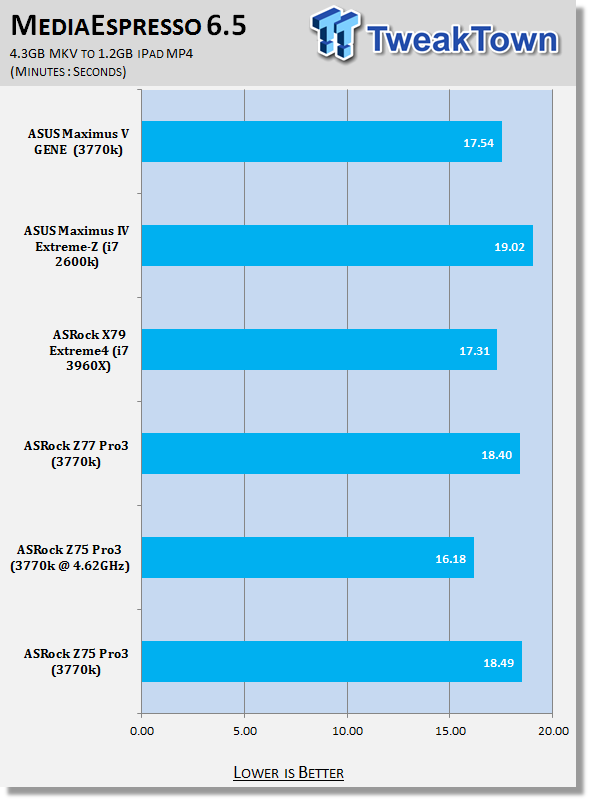
Out of the box PCMark 7 and MediaEspresso performance lines up just as you'd hope against the ASRock Z77 Pro3. Overclocked as always, though, helps bring some extra performance with MediaEspresso helping show us the real-world benefit of overclocking thanks to the reduced media encode time.
USB 2.0 and 3.0 Benchmarks
AIDA64
Version and / or Patch Used: 1.70.1400
Developer Homepage: http://www.aida64.com
Product Homepage: http://www.AIDA64.com
Replacing Everest in our labs is AIDA64. This new testing suite is from the core development team from Lavalys and continues that tradition. The guys have thrown in better support for multithreaded CPUs as well as full 64 bit support. We use this to test memory and HDDs for now, but may find ourselves opening this up to other areas of the motherboard.


XFast technology as always proves itself when it comes to USB 2.0 performance with strong numbers while as usual we don't see any major change when it comes to the USB 3.0 side of things.
SSD Benchmarks
AIDA64
Version and / or Patch Used: 1.70.1400
Developer Homepage: http://www.aida64.com
Product Homepage: http://www.AIDA64.com
Replacing Everest in our labs is AIDA64. This new testing suite is from the core development team from Lavalys and continues that tradition. The guys have thrown in better support for multithreaded CPUs as well as full 64 bit support. We use this to test memory and HDDs for now, but may find ourselves opening this up to other areas of the motherboard.

HD Tune Pro
Version and / or Patch Used: 4.61
Developer Homepage: http://www.hdtune.com
Product Homepage: http://www.hdtune.com
HD Tune Pro gives us accurate read, write and access time results and for the last couple of years has been gaining popularity amongst reviewers. It is now considered a must have application for storage device testing.

SSD performance on the Z75 Pro3 is extremely strong and you can see under HD Tune Pro we don't get that dip to the 380 MB/s mark like we saw out of the ASRock Z77 Pro3 and the ASUS P8Z77-I Deluxe we recently looked at.
Memory Benchmarks
AIDA64
Version and / or Patch Used: 1.00.1035BETA
Developer Homepage: http://www.aida64.com
Product Homepage: http://www.AIDA64.com
Replacing Everest in our labs is AIDA64. This new testing suite is from the core development team from Lavalys and continues that tradition. The guys have thrown in better support for multithreaded CPUs as well as full 64 bit support. We use this to test memory and HDDs for now, but may find ourselves opening this up to other areas of the motherboard.

Memory performance lines up just as we'd hope out of the box and overclocking as always helps yield a nice boost in Write performance and a slight boost in Copy and Read performance.
Gaming Benchmarks
3DMark 11
Version and / or Patch Used: 1.0
Developer Homepage: http://www.futuremark.com
Product Homepage: http://www.3dmark.com/3dmark11/
3DMark 11 is the latest version of the world's most popular benchmark. Designed to measure your PC's gaming performance 3DMark 11 makes extensive use of all the new features in DirectX 11 including tessellation, compute shaders and multi-threading. Trusted by gamers worldwide to give accurate and unbiased results, 3DMark 11 is the best way to consistently and reliably test DirectX 11 under game-like loads.

Metro 2033
Version and / or Patch Used: Latest Steam Update
Timedemo or Level Used: Built in Benchmark
Developer Homepage: http://www.4a-games.com//
Product Homepage: http://www.thqnordic.com/
Metro 2033 is an action-oriented video game with a combination of survival horror and first-person shooter elements. The game is based on the novel Metro 2033 by Russian author Dmitry Glukhovsky. It was developed by 4A Games in Ukraine and released in March 2010 for Microsoft Windows and Xbox 360.[3] In March 2006, 4A Games announced a partnership with Glukhovsky to collaborate on the game.[4] The game was announced at the 2009 Games Convention in Leipzig;[5] a first trailer came along with the announcement.[6] A sequel was announced, currently titled Metro: Last Light.
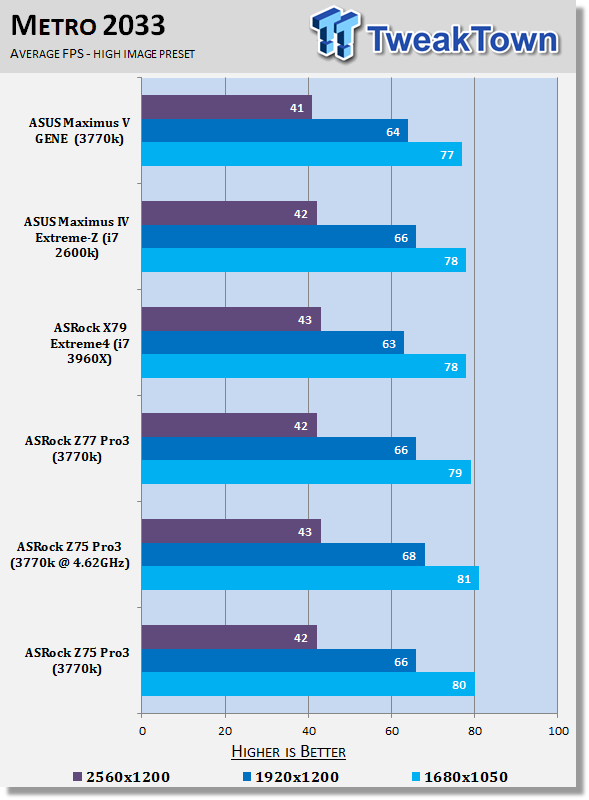
We see the same kind of results we normally see under 3DMark 11 and Metro 2033. That means our Performance preset sees a little bump when overclocked while Metro 2033 doesn't show too much of a change with just an extra FPS here and there.
Temperature and Power
Power Consumption
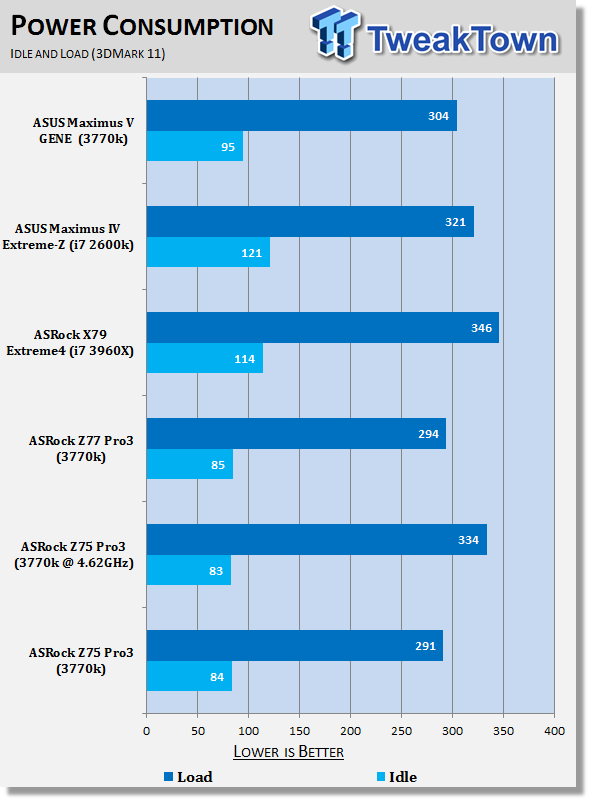
You can see that out of the box power draw between the Z77 Pro3 and Z75 Pro3 is almost identical at both idle and load with very little separating the two. Overclocking sees that no real change is present in the idle numbers while load does jump slightly to 334 Watts.
Core Temperature

CPU temperature is also again very close between both boards. As for overclocked numbers the Z75 Pro3 ran an extra degree warmer at load so again we really see nothing much separating the two boards.
Final Thoughts
At $84.99 the ASRock Z75 Pro comes in $10 cheaper than its big brother the Z77 Pro and for most users, they wouldn't be able to tell the difference between the two boards. So the question that needs to be answered is what's the better choice? I think from a pure common sense point of view, the Z75 Pro3 is thanks to it being $10 cheaper.
Saying that we'd probably almost lean towards the Z77 Pro3 as the board to buy simply because it's the "higher end" chipset when comparing the two and the fact that it's only $10 more expensive is almost worth it to just be on the said chipset. If you're extremely tight on your budget, though, you can get the Z75 Pro3 knowing that you're really going to have the same performance as a Z77 based motherboard.
The Z75 Pro3 ultimately shares the same flaws as the Z77 Pro3 with the biggest being the aesthetics. By no means are the Pro3 boards good looking, they are very practical, though, and hit at a very strong price point. The mean reason we're probably not seeing companies do much with the Z75 chipset, though, is because the difference between them is so tiny that in the end only $10 separates them and an entry level Z77 based motherboard.
The ASRock Z75 Pro3 is not only a good board, but compared to the Z77 Pro3, it's probably a better board due to the lower price tag. If you don't need Intel Smart Response Technology then this is really an easy choice, especially when you consider while one of the other limitations with the Z75 chipset is the PCIe x16 configuration which sees both the Z77 and Z75 Pro3 share the x16 / x4 setup.
In the end most people will probably find that the extra $10 isn't worth it for ISRT; what most people will probably feel, though, is that they'd rather pay the extra $10 to be on a Z77 based board verses a Z75 board.
Both boards are great for people on a budget, though, and in typical fashion ASRock really doesn't disappoint, be it with a board that comes in at under $100 or a board that comes in at over $300.


 United
States: Find other tech and computer products like this
over at
United
States: Find other tech and computer products like this
over at  United
Kingdom: Find other tech and computer products like this
over at
United
Kingdom: Find other tech and computer products like this
over at  Australia:
Find other tech and computer products like this over at
Australia:
Find other tech and computer products like this over at  Canada:
Find other tech and computer products like this over at
Canada:
Find other tech and computer products like this over at  Deutschland:
Finde andere Technik- und Computerprodukte wie dieses auf
Deutschland:
Finde andere Technik- und Computerprodukte wie dieses auf